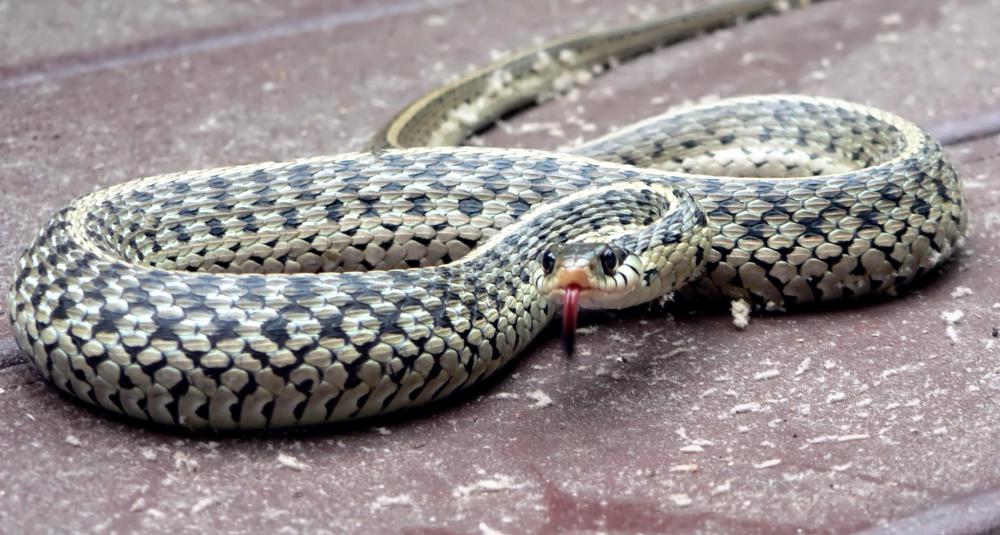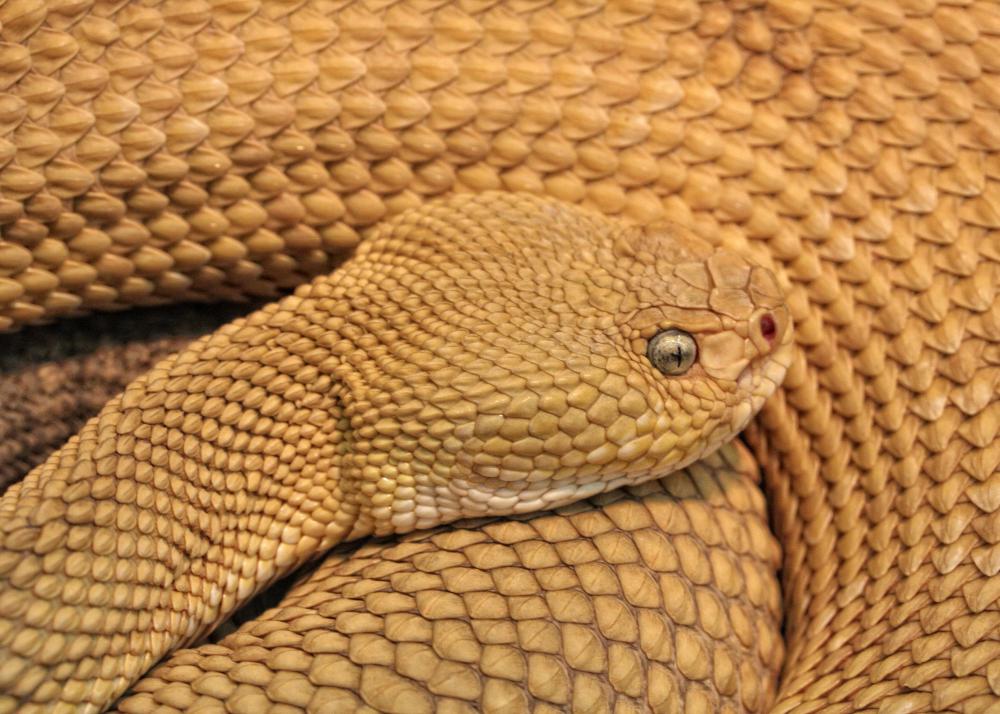At AllThingsNature, we're committed to delivering accurate, trustworthy information. Our expert-authored content is rigorously fact-checked and sourced from credible authorities. Discover how we uphold the highest standards in providing you with reliable knowledge.
How do I Differentiate Between Snake Species?
When a snake is encountered in the wild, most people determine its species on visual characteristics such as size, color, scale structure, and other factors. In captivity or when viewed on a scientific excursion, a snake might also be identified by its behavior, preferred diet, and other more time-related characteristics. Learning to differentiate between snake species can be a valuable skill for anyone who might encounter snakes in the wild, and there are a few good strategies to use when accomplishing this task.
It's fairly easy to narrow down which snake species a snake found in the wild might belong to simply by considered where one saw it. Most snakes only live in certain areas, and being familiar with which snake species live in certain areas can narrow down the number of potential species considerably. When an unknown snake species is encountered in captivity, the breed may be more difficult to determine, but is usually known the owner. Unfortunately, the prevalence of escaped pet snakes may mean that a snake species unusual for the area may be encountered, although this is rare.

Size can also be a major and obvious way to differentiate between snake species. Some snakes are very small, while others are large, and this alone can often serve to identify the snake. Most snakes have a range that is common for its species, although there are certainly large and small outliers.
The next strategy most people apply involves the coloration of the snake. Many snakes have distinctive coloration, such as colored bands, saddle markings, or even a single plain color. These can sometimes be confusing, as in the difference between the harmless milk snake and the venomous coral snake, but attention to the relevant details, such as placement of the colors, can often serve to differentiate even vastly similar species.

Other physical characteristic, such as the sleekness of the scales, the size of the head, and the way in which the snake moves, can all be used in some cases to identify a snake species. In some cases, snakes may have very distinctive physical characteristics such as horns, a hood, or a rattle. The bodies of snakes may be skinny or relatively wide. All these factors give different snakes very unique appearances.

It is important not to approach an unidentified snake, although it is never a good idea to disturb even a non-venomous snake in the wild. The best policy is to simply leave all snakes alone, and to never approach a snake that is known to be poisonous. Identifying snakes in the wild can be a fascinating hobby, but it should always be enjoyed with safety and animal welfare in mind.
Frequently Asked Questions
What are the key features to look at when identifying snake species?

To differentiate between snake species, examine scale patterns, head shape, eye size and pupil shape, coloration, and body size. For instance, venomous snakes often have triangular heads and elliptical pupils, while non-venomous ones typically have round pupils. Scale texture and arrangement can also be distinctive, with some species having keeled scales and others smooth.
How can I tell if a snake is venomous or not?

While not foolproof, certain characteristics can suggest venomous traits: a triangular head, elliptical pupils, and a heat-sensing pit between the eye and nostril are common in many venomous species. However, it's crucial to note that these are not universal indicators, and some non-venomous snakes mimic venomous ones for protection.
Can the environment help in identifying snake species?
Absolutely, snakes are often adapted to specific environments. For example, water snakes have flattened tails for swimming, while desert snakes may have lighter colors for camouflage and heat reflection. Knowing the typical habitat of a snake can significantly narrow down the possible species you're observing.
Are there any tools or apps that can help identify snake species?
Yes, there are several apps and online resources that can assist in snake identification. These tools often allow users to input observations about the snake's appearance, behavior, and habitat, providing a list of potential species matches. Always use reputable sources and consult local wildlife experts when in doubt.
What should I do if I encounter a snake and cannot identify it?
If you encounter a snake and cannot identify it, the safest course of action is to maintain a respectful distance. Do not attempt to handle the snake, as this can provoke an attack. Instead, observe its features from a safe distance and, if necessary, contact local wildlife authorities for assistance.
How accurate are color and pattern in identifying snake species?
Color and pattern are useful but not always reliable for identification, as some species exhibit a wide range of color morphs, and others may have similar patterns. Juvenile snakes can also have different markings than adults. It's important to consider multiple features in conjunction with color and pattern for accurate identification.
AS FEATURED ON:
AS FEATURED ON:















Discussion Comments
Anyone who is interested in learning more about snakes should visit a zoo or nature preserve in his or her area. These facilities usually offer classes or workshops in identifying snakes that may be found locally, as well as those that are common throughout the world.
Not only are these informative sessions interesting for snake enthusiasts, but they also give young students important information on snakes that could help them on science tests.
I have a friend who is planning to go into zoology, and is taking a class about identifying snakes. There are so many different snakes in the wild, that it is a very difficult task to master. I'm glad to see that the article mentions that fact, and warns about approaching snakes that may or may not be venomous. When it comes to snake species, it is better to be safe than sorry.
Post your comments